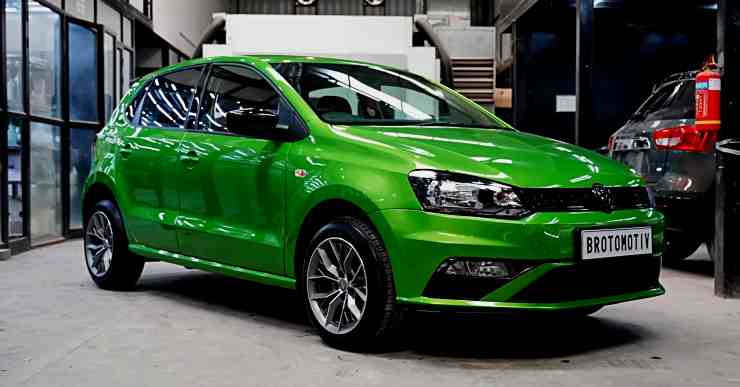When you go to a fuel station and ask the attendant to fully fill up the tank, most likely you’ll assume that the car will take the fuel as per the tank capacity provided by the car manufacturer. However, recently a man named Deepesh Babu, who is a resident of Kochi and owner of a 2018 Volkswagen Polo, encountered a unique situation. What happened was that this Polo, with a fuel tank capacity of 45 litres, was filled with 53 litres of fuel. After noting this, he was shocked and stated that he had been scammed. However, what happened next was extremely surprising.

This particular case happened at an Indian Oil Corporation (IOC) fuel pump in Chembumukku. Deepesh, who mentioned that he had been a loyal customer of the pump since 2007, was taken aback. This was because the fuel dispenser indicated that his Polo’s fuel tank had been filled with 53 litres of petrol. However, the Volkswagen’s specifications listed the tank capacity at only 45 litres.
The Incident
What happened was that one day, when Deepesh requested a full tank of petrol, he was surprised when the pump stopped at 53 litres. This total amount was significantly above the expected 45 litres. Deepesh, then vigilant, suspected that the fuel pump might be rigged to overcharge.
So, he immediately reported the discrepancy to both the car showroom and the pump owner. Soon after this, he managed to file a complaint with the IOC, seeking clarification and resolution.
Verification Experiment

Following the complaint, in order to address the issue and maintain their reputation, IOC, along with Deepesh and the pump owner, conducted an experiment. For this, they first completely drained the entire petrol tank of Deepesh’s Volkswagen Polo. After this, they refilled it using a five-litre can certified by the Legal Metrology Department.
Next up, Deepesh and the fuel pump owner witnessed the methodical refilling process. It was also closely monitored by IOC official Dalbin Christopher and the pump manager Shalu. What was then found out was that the fuel tank was filled to capacity at 57.83 litres. This far exceeded the manufacturer’s stated capacity.
How did this happen?

After this experiment, many automobile experts shared their insights into this unexpected result. They stated that it is generally known that car fuel tanks can hold a few litres more than the specified capacity due to design allowances. In the case of the Volkswagen Polo, the fuel tank managed to accommodate an additional 12.83 litres.
Now, it may sound like more fuel being added to the fuel tank is a good thing. However, it is not the case. Generally, it is very alarming as experts caution against routinely overfilling beyond the manufacturer’s cut-off to avoid potential safety issues. So, in this case, upon realizing there was no fraudulent activity involved, Deepesh, the IOC representative, and the pump manager resolved the issue cordially.
Scams at Fuel Pumps
Now, while Deepesh’s case turned out to be a misunderstanding, it is not the case with many other people who get caught by fuel pump scammers. There are not one but many different fuel station scams that take place across the country on a daily basis. Here are some of them.
Manual Intervention in Fuel Dispensing
Fuel attendants often keep their fingers on the nozzle. So, even when a fixed amount of fuel is pre-set, they manually interrupt the flow, delivering fuel in short bursts, potentially resulting in short filling by over a litre per transaction.

Long Fuel Dispense Pipes
Some fuel stations use longer-than-necessary dispense pipes. Fuel generally remains as residual in these longer pipes. Hence, this fuel is returned to the dispenser, and it effectively charges customers for fuel they do not receive.
Distraction During Fueling
Fuel pump attendants may distract customers with conversations about unrelated topics or questions about mileage and additives. Meanwhile, another attendant resets the meter. This then misleads the customer about the actual amount of fuel dispensed. Also, when customers pay by card, attendants can distract them with additional questions. This allows them to reset the meter without notice.

Partial Fill and Resume
This can happen when an attendant may stop the fuel flow before reaching the pre-set amount. After this, they pretend to resume without resetting the meter. For instance, stopping at Rs. 200 and then continuing to Rs. 800 without resetting results in the customer being charged for Rs. 1,000 worth of fuel but receiving less.






![Toyota Fortuner Type2 With A Lexus Kit Feels Imposing [Video]](https://www.cartoq.com/wp-content/uploads/2024/06/toyota-fortuner-type2-with-lexus-kit-253x131.jpg)
![Tesla Model Y Rolls Over 7-Times Yet All Passengers Safe: Elon Musk Reacts [Video]](https://www.cartoq.com/wp-content/uploads/2024/06/crazy-tesla-model-y-crash-caught-on-camera-china-253x131.jpg)

![Multiple Roads And Underpasses In Delhi Waterlogged After Heavy Rains [Video]](https://www.cartoq.com/wp-content/uploads/2024/06/delhi-under-water-logging-floods-cars-stuck-253x131.jpg)
![A Closer Look At The Crazy-Looking Bujji Car That Stars In Prabhas Movie Kalki 2898 AD [Video]](https://www.cartoq.com/wp-content/uploads/2024/06/Kantara-actor-Director-Rishabh-Shetty-with-Bujji-car-1-253x131.jpg)